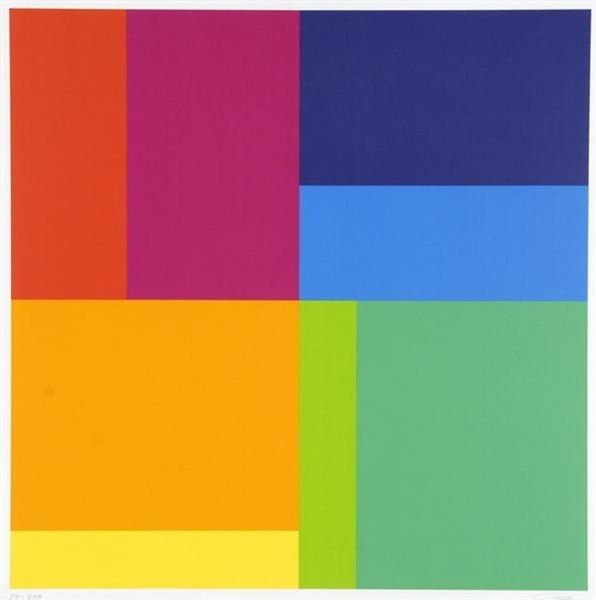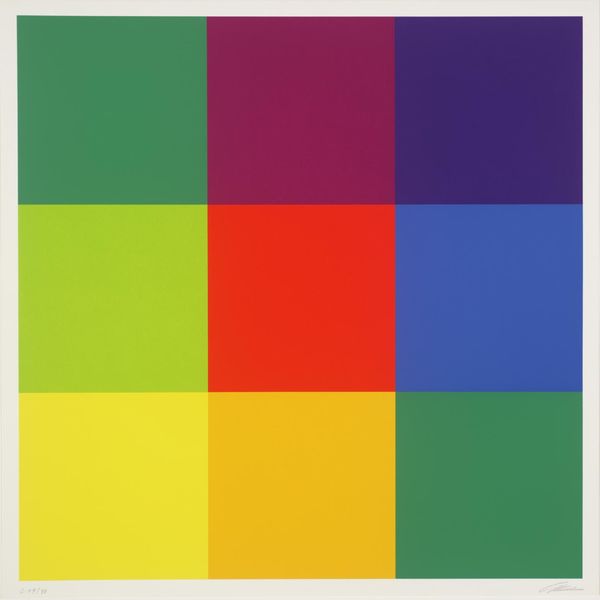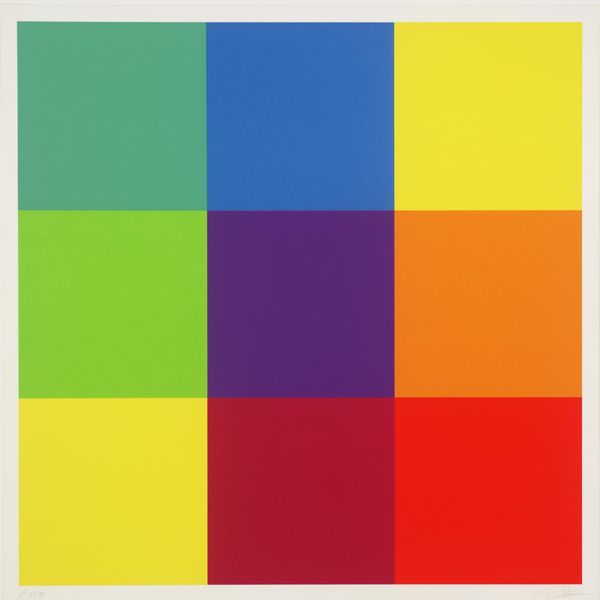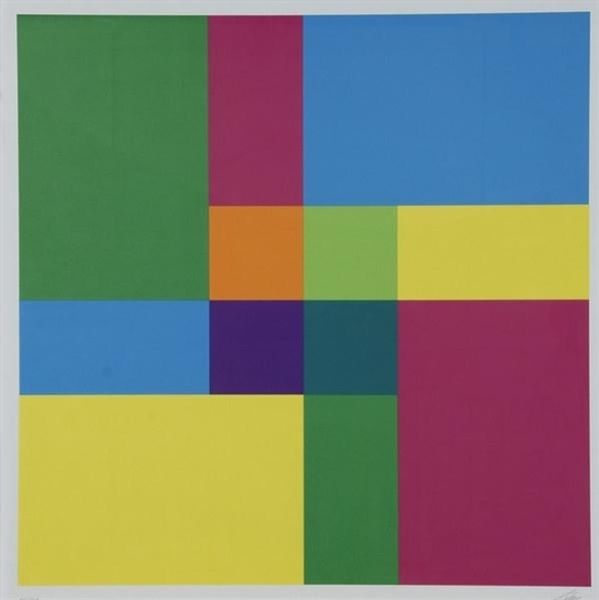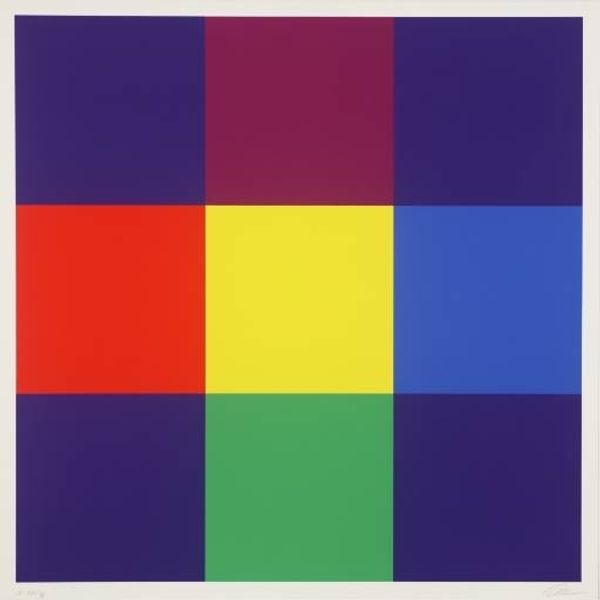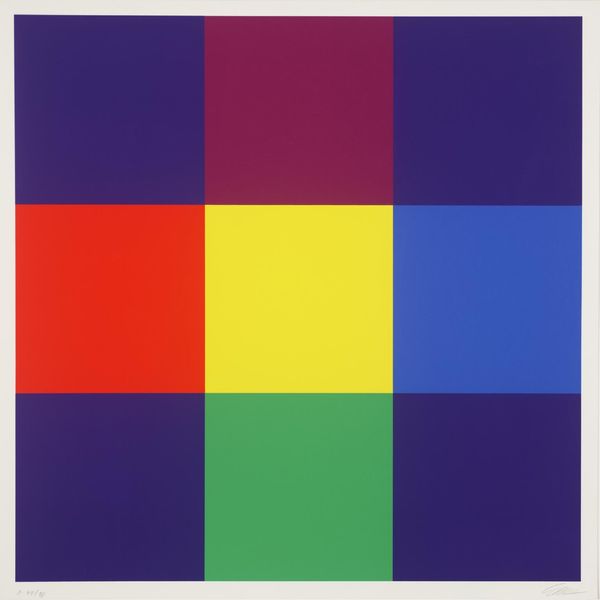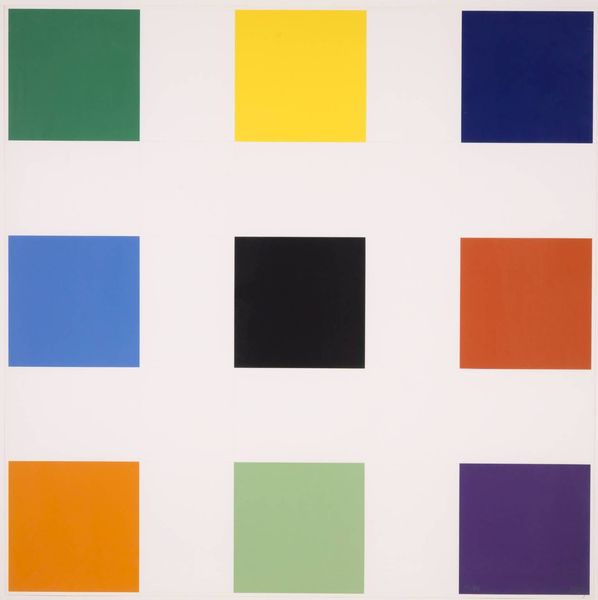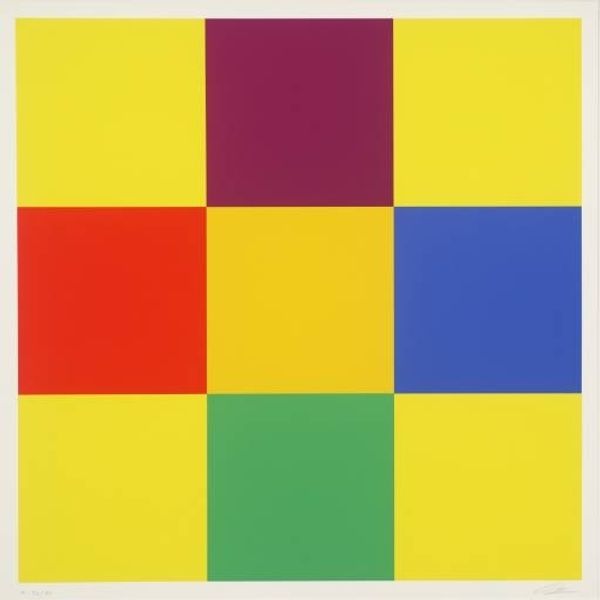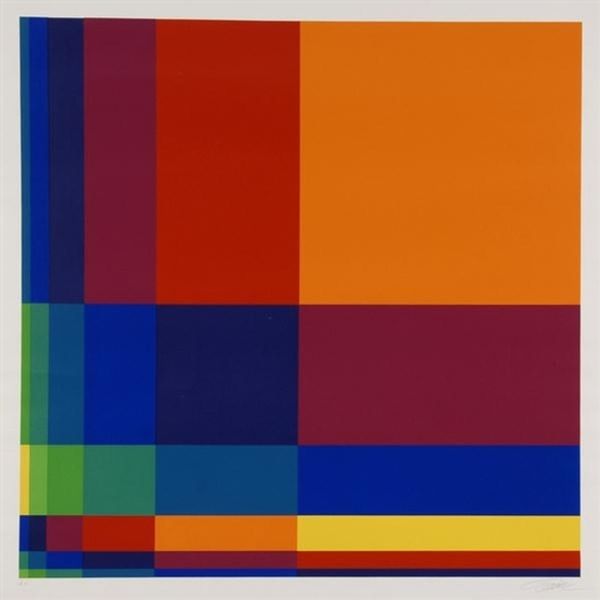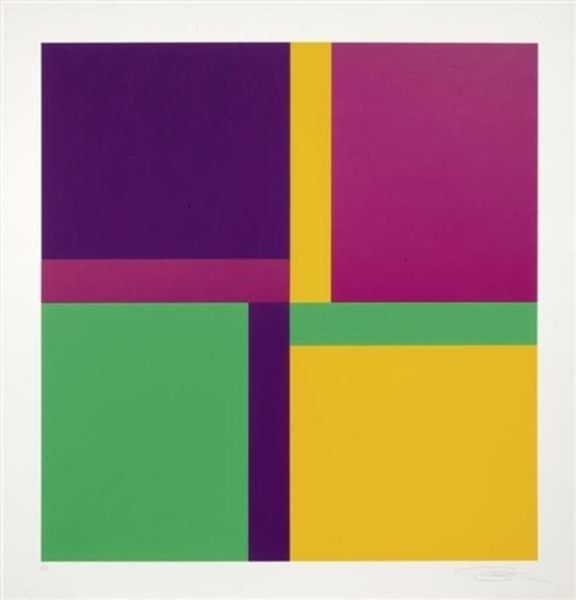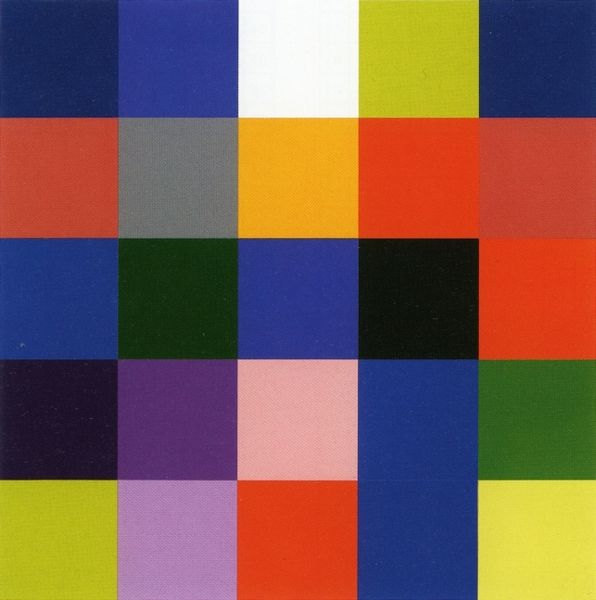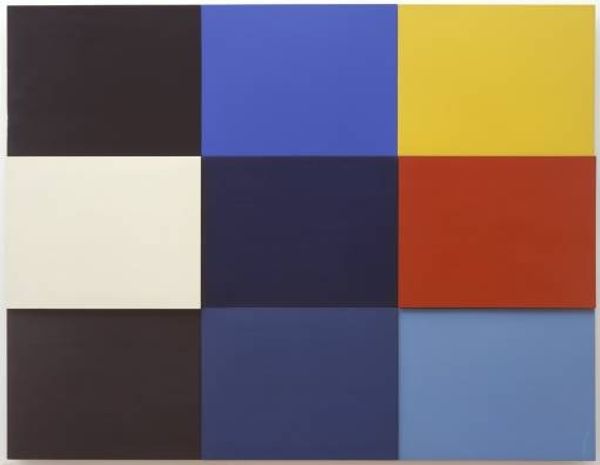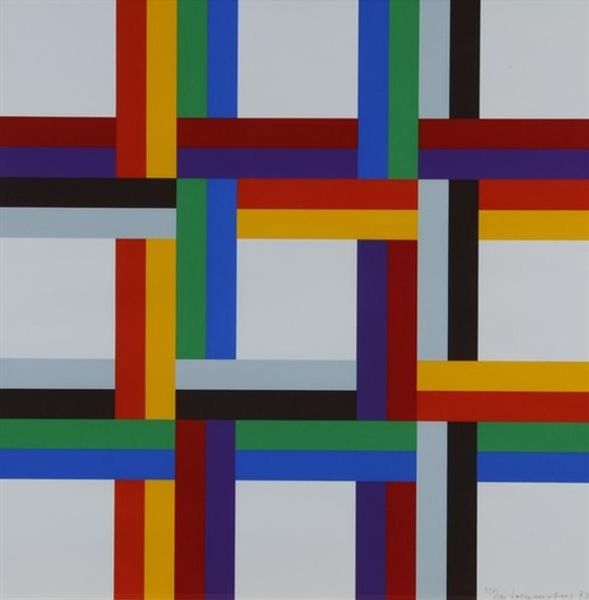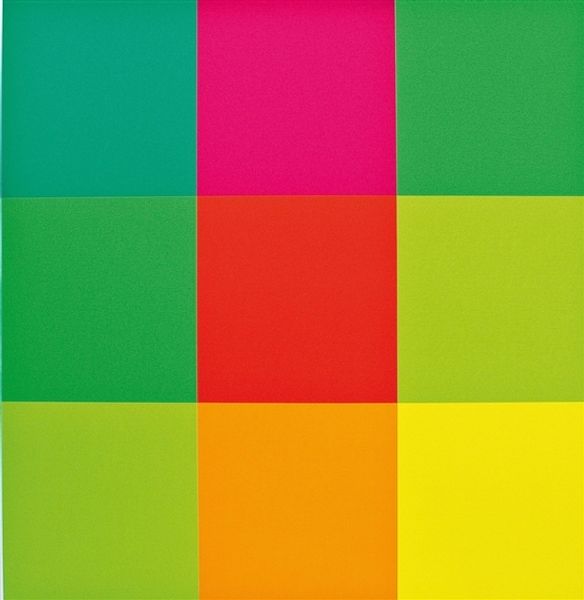
Copyright: Richard Paul Lohse,Fair Use
Curator: Here we have Richard Paul Lohse's "Gestufte Quadratreihe um ein Komplementärzentrum," created in 1972. Editor: It's so systematically vibrant! Each square presents a definitive tonal quality, demanding visual order with its strict hard edges. Curator: Lohse's method prioritizes calculated permutations; this painting reveals Concrete Art’s reliance on mathematical ordering, something akin to weaving where labor invests inherent value into the created outcome. How might you view his processes? Editor: He structures perception. Look closely: there’s a near scientific control of chromatic relationships. The color placements guide the eye, from warmer hues, like these arresting oranges and reds, toward colder counterparts—a symphony in visual temperature. Curator: This interplay is key. Think of the industrial age's colour production, democratizing creative means, enabling artists such as Lohse to adopt what were radical and unusual compositions. Such accessibility shifted fine art as well; what was once artistic expression melded into something far closer to graphic design. Editor: Perhaps. However, this controlled deployment—the strategic positioning of each plane of colour—echoes minimalist principles. Curator: It echoes the social, I think. Mass production creates accessibility in the marketplace as consumer objects embrace "art", transforming both the means and the definitions! This particular artwork's commodification represents Concrete Art itself. Editor: Maybe. Regardless, the precision is key. It isn't simply a mechanical output; it's an aesthetic exploration realized in hard-edged visual harmony, where pattern becomes both the subject and medium. Curator: These geometric relations give "voice" to the labor through repetitive patterns in manufacturing processes—commentary and expression emerge not from the painter, but instead by proxy! Editor: Both method and material serve structure, underscoring how formal properties create inherent meaning. It has a subtle beauty achieved only by close observance. Curator: Indeed, observing and interpreting artwork through available means of labour illuminates an artistic expression frequently disregarded during aesthetic appraisal, expanding dialogues beyond colour theory and compositions. Editor: This art provokes—a balance found between form and significance.
Comments
No comments
Be the first to comment and join the conversation on the ultimate creative platform.
